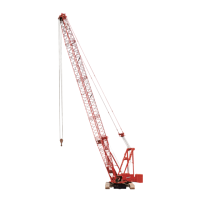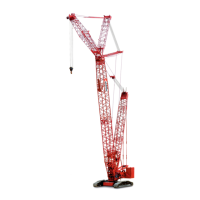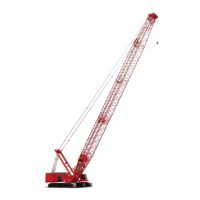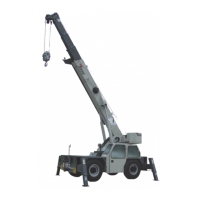Manitowoc Published 05-15-17, Control # 043-09 4-27
999 LUFFING JIB OPERATOR MANUAL SETUP AND INSTALLATION
Jack-Knife Lowering Procedure
See Figure 4-14 for the following procedure. Circled
numbers in Figure 4-14
correspond to numbered steps in the
following procedure.
NOTE: It is normal for the BLOCK UP, MAX UP 1, and
MAX UP 2 limits to come on during the lowering
procedure.
1. Swing upperworks in-line with lowerworks so boom is
centered over either end of crawlers.
2. Travel crawler rollers onto blocking (end under boom).
3. Swing boom and jib slightly to either side of center and
lower load blocks and/or weight balls onto ground. Then
swing boom and jib in-line with crawlers and apply swing
brake.
4. Raise boom to 85° boom angle.
5. Slowly luff down to position jib at required boom to jib
angle (see Raising Procedure Chart for angle). Monitor
angle on digital display.
It will be necessary to use limit bypass switch to luff
down if BLOCK UP limit is on.
6. Slowly boom down until jib point rollers contact ground.
Depending on boom and jib combination, jib may be
hanging vertical when rollers contact ground. If this
happens, raise jib (luff up) until jib is a few degrees
forward of vertical.
It will be necessary to use limit bypass switch to boom
down if BLOCK UP limit is on.
7. Release swing brake (disengage swing lock) and
continue to lower boom slowly.
Jib point rollers will roll along ground as boom and jib
unfold.
8. Pay out load lines as boom and jib lower.
9. Backstay pendants and jib straps will slacken as boom
and jib lower:
• OPERATOR — watch backstay pendants along left
side of boom. While booming down, haul in luffing
hoist wire rope (luff up) at a rate that allows backstay
pendant connectors nearest you to float up and
down 6 – 12 in (152 – 305 mm) above boom chord.
• SIGNAL PERSON — watch jib straps along left side
of jib. Jib top straps should lay on jib top as boom
and jib lower. If more straps start to lower into strap
brackets on jib inserts, signal operator to luff up
faster.
It will be necessary to use limit bypass switch to luff
down if BLOCK UP limit is on.
10. Continue with Jack-Knife Lowering Procedure steps
7
– 9 until jib stop pendants start to go into tension
(approximately 168° boom to jib angle). Monitor this
angle on digital display.
DANGER
Tipping Crane Hazard!
Lower all boom and jib combinations over blocked
crawlers, otherwise crane will tip.
WARNING
Tipping Crane Hazard!
Lower all load blocks and/or weight balls onto ground
before lowering boom and jib. Crane could tip if this step
is not performed.
DANGER
Tipping Crane Hazard!
For jack-knife method, do not lower boom and jib to
ground until boom has been positioned at minimum angle
of 80
° and jib has been positioned at specified boom to
luffing jib angle. Crane will tip.
Falling Jib Hazard!
Do not lower jib to any boom to jib angle less than
minimum stop (40° past or 55° current). Structural
damage to jib butt will occur, possibly causing jib to
collapse.
CAUTION
Side Loading Hazard!
Avoid possible structural damage to boom and jib from
side loading as boom and jib are lowered:
Disengage swing lock and release swing brake when jib
point rollers contact ground.
WARNING
Tipping Hazard!
Do not allow backstay pendants and jib straps to become
too tight during lowering steps. Crane will tip or structural
damage will result.
Do not allow backstay pendants and jib straps to become
too slack during raising steps. Jib strut could fall onto jib
butt.
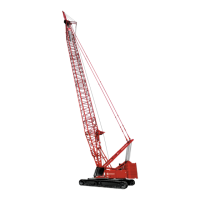
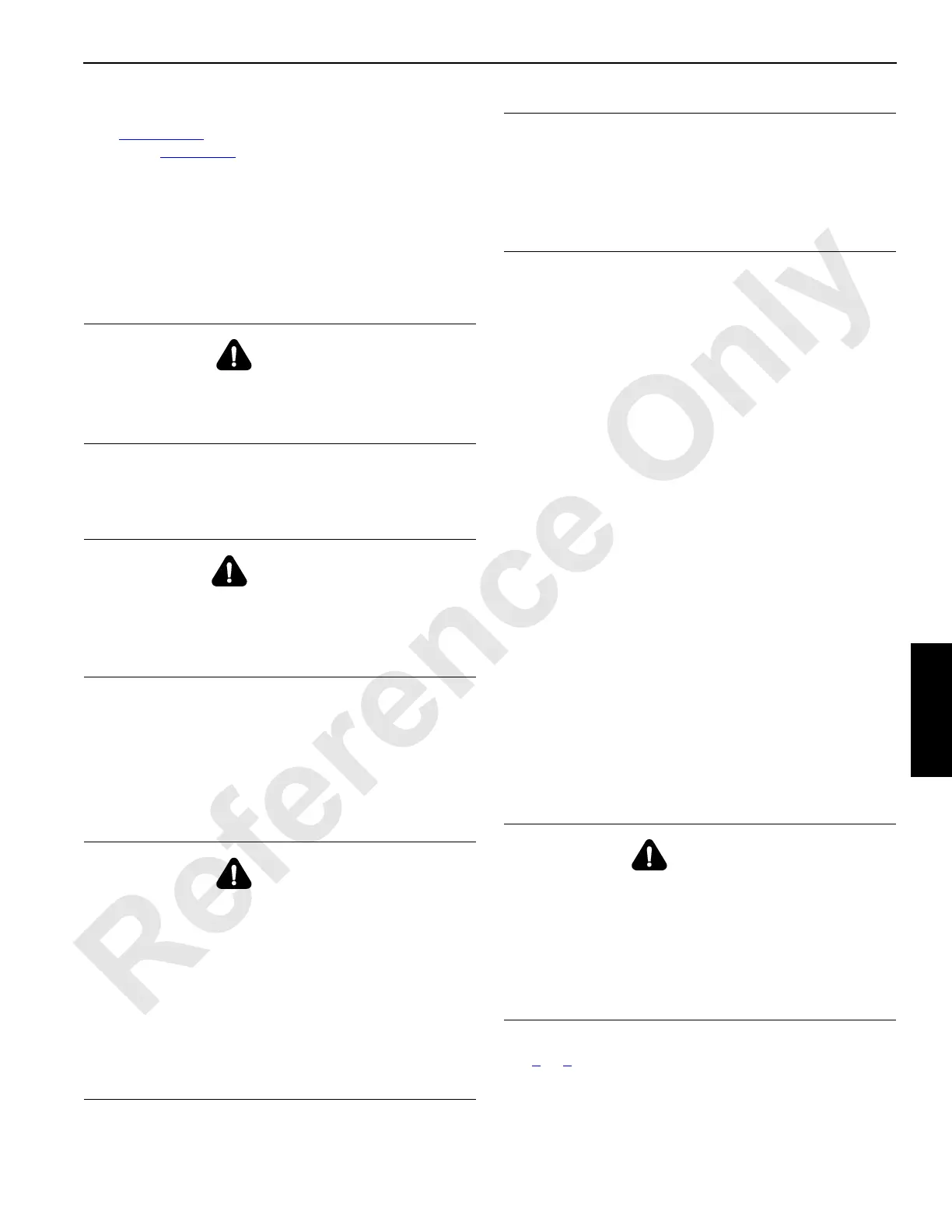